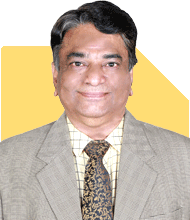Kanchan Rai |189 Answers |Ask -Follow
Relationships Expert, Mind Coach - Answered on May 04, 2024
Rai has a degree in leadership development and customer centricity from Harvard Business School, Boston. She is an internationally certified coach from the International Coaching Federation, a global organisation in professional coaching.... more

Hi I am 22 year old female about to graduate as an artist, I've wasted my 4 years of college and self doubt as a graphic designer kills me everyday i wake up and think i'd finally create something but due to my own expectations i don't even open the software to start with and even if i do i don't understand what to get done with first i want to be an established designer and boom in my field, please tell me how can I be come more passionate about my career and actually make effort in it
Remember, everyone experiences moments of doubt and uncertainty, but it's important to keep pushing forward and believing in yourself and your abilities. Keep exploring, experimenting, and creating, and trust that your passion and dedication will lead you to success in your career as a graphic designer.
You may like to see similar questions and answers below
Maxim Emmanuel |215 Answers |Ask -Follow
Soft Skills Trainer - Answered on Mar 26, 2024
Maxim Emmanuel |215 Answers |Ask -Follow
Soft Skills Trainer - Answered on Apr 17, 2024
Ramalingam Kalirajan |2611 Answers |Ask -Follow
Mutual Funds, Financial Planning Expert - Answered on May 18, 2024
Ramalingam Kalirajan |2611 Answers |Ask -Follow
Mutual Funds, Financial Planning Expert - Answered on May 18, 2024
Ramalingam Kalirajan |2611 Answers |Ask -Follow
Mutual Funds, Financial Planning Expert - Answered on May 18, 2024
Ramalingam Kalirajan |2611 Answers |Ask -Follow
Mutual Funds, Financial Planning Expert - Answered on May 18, 2024
Ramalingam Kalirajan |2611 Answers |Ask -Follow
Mutual Funds, Financial Planning Expert - Answered on May 18, 2024
Ramalingam Kalirajan |2611 Answers |Ask -Follow
Mutual Funds, Financial Planning Expert - Answered on May 18, 2024
Ramalingam Kalirajan |2611 Answers |Ask -Follow
Mutual Funds, Financial Planning Expert - Answered on May 18, 2024
Ramalingam Kalirajan |2611 Answers |Ask -Follow
Mutual Funds, Financial Planning Expert - Answered on May 18, 2024
Ramalingam Kalirajan |2611 Answers |Ask -Follow
Mutual Funds, Financial Planning Expert - Answered on May 18, 2024
Ramalingam Kalirajan |2611 Answers |Ask -Follow
Mutual Funds, Financial Planning Expert - Answered on May 18, 2024














.jpg)






